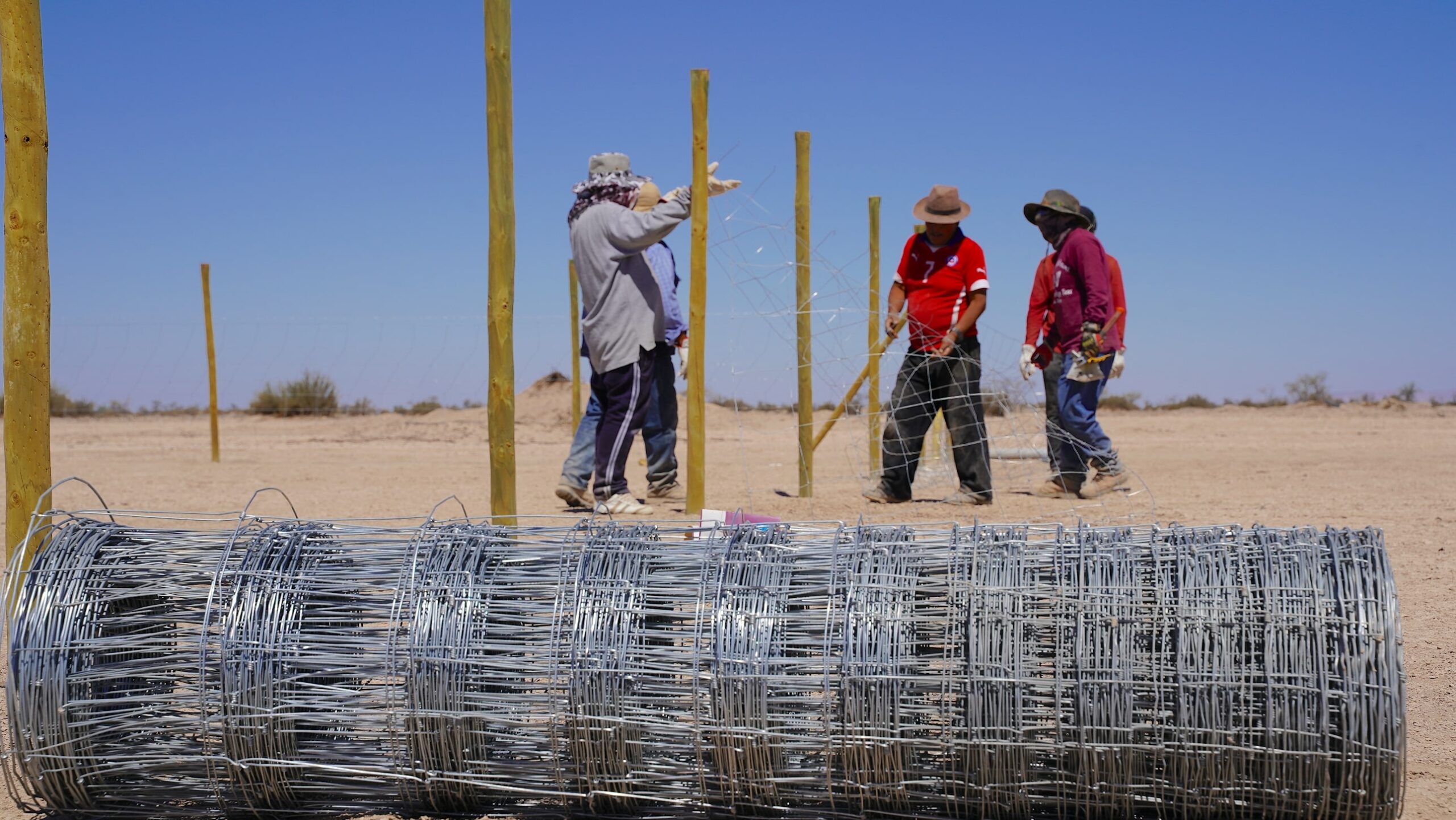News
Pampa del Tamarugal Ranchers Make Progress on Construction of Alfalfa Production Center

Members of the Pampa de Tamarugal Rural Aymara Association continue making progress on the project, northern Chile’s largest alfalfa production center.
The Pampa del Tamarugal ranchers completed construction of a perimeter fence in the El Carmelo de La Tirana sector, the 40-hectare future site of the Alfalfa Production Center to supplement feed for local livestock.
The work was completed on schedule and per health protocols thanks to coordination by the ranchers, who led the project and actively participated by contributing their knowledge and labor.
To avoid crowds and optimize the available equipment, four separate work teams carried out the task. Aldo Flores, a local rancher, explained: “This project was made possible by CONAF and SQM. We will now start planting alfalfa to supplement the feed for our livestock, particularly during shortages.”
Victor Moscoso, another association member, commented: “We hope that this will be really different and beautiful in another year. The association has a really nice dream. We plan to make it come true in the best of ways.”
Notably, the project will be one of northern Chile’s largest alfalfa plantations and include elements to sustainably use water. Pablo Pisani, Director of Communications, Sustainability and Public Affairs at SQM, explained: “Creation of shared social value is part of the Company’s community management efforts. We have been listening to the association and collaborating throughout the entire process, and this project meets their needs. The most important facet of the project is that the community itself leads it.”
Juan Ignacio Boudon, CONAF Regional Director, noted: “This entire project is unprecedented in northern Chile. It will take place in a protected wilderness area so that the association can continue raising livestock in the area as they have historically.”
He also highlighted the progress that has been made on the project, which is currently focused on fencing off the site’s perimeter using endangered species of trees grown in the CONAF greenhouse in the Pampa del Tamarugal National Reserve. “The community is planting a living fence of native species like Tamarugo and Churki to protect the crops. Then, the project will continue with irrigation systems, which will be installed underground to prevent evaporation loss and water the root system directly.”
The project calls for the first planting of 15 hectares this year and is scheduled for completion in 2024. In return, the ranchers made a commitment to CONAF to establish a maximum herd size to ultimately decrease the load on the Tamarugo forest as the primary source of feed.
